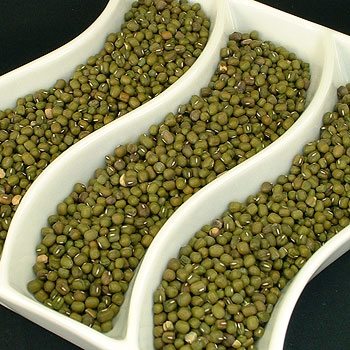 Mung Beans
Mung Beans© Denzil Green
The Mung Bean plant is an annual plant that grows upright, as opposed to climbing as do many other bean plants. The bean pods grow near the top of the plant. The pods are ready to harvest in 75 to 90 days after planting the seed; each pod will contain 8 to 15 seeds or small “beans” that are about ¼ inch wide (.5 cm.)
The skin of the beans can be bright green, olive green, brown or black, and inside they can be pale to dark yellow, depending on the variety.
When dried, husked and split, the bean is called Yellow Mung or Mung Dal in India.
Mung is the most common bean used for sprouting in Asian cooking.
Cooking Tips
In a pressure cooker, use 4 parts of water to 1 part washed Whole Mung Beans. Bring to pressure, then cook for 15 minutes. Mung Beans cook up very soft.
Nutrition
Unlike other beans, Mung Beans don’t cause gas.
History Notes
native to India
Language Notes
The “gram” in some of the other names for Mung Bean comes from an old Portuguese word “gram”, coming from the Latin “granum”, to mean “grain”. The modern Portuguese word is grão.

